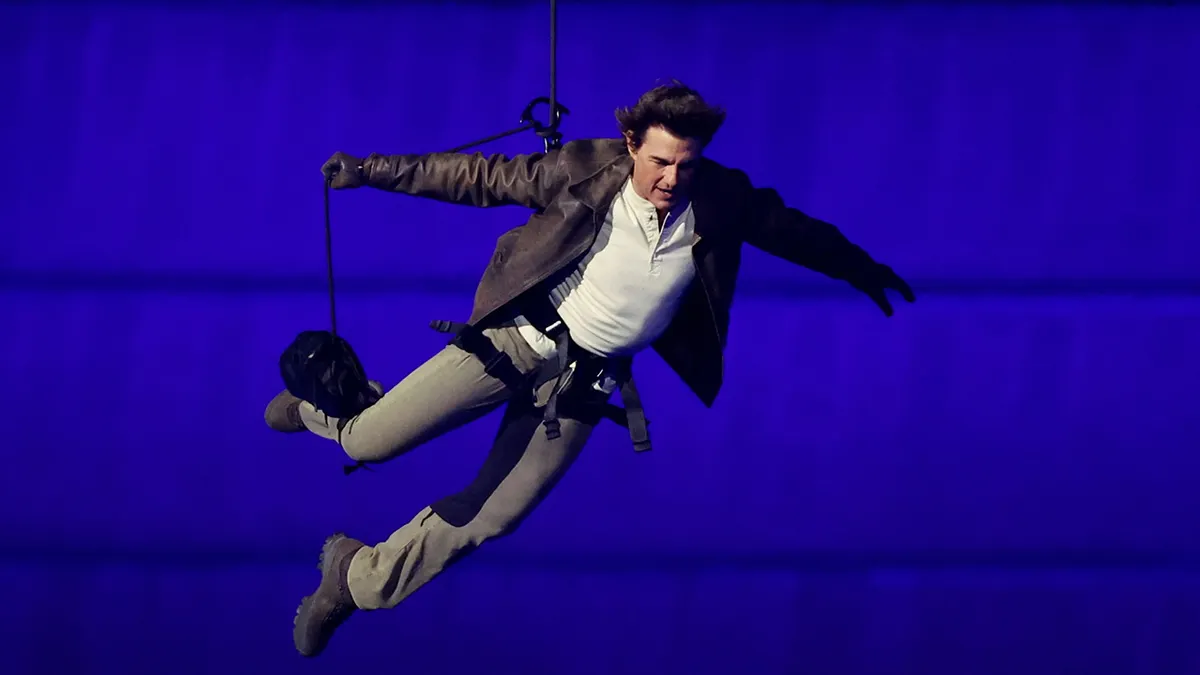Tom Cruise is not known for taking the easy route. In an interview, the actor discussed filming the latest installment in the “Mission: Impossible” franchise, titled “The Final Reckoning,” which is slated for a theatrical release this May.
During the conversation, Cruise shared just how intense some of the film’s stunts were to perform.
One particularly daring scene, which appears on the cover of Empire, features Cruise gripping onto a 1930s biplane as it soars through the air. Staying true to his signature approach, the actor executed the stunt himself.
“When you stick your face out, traveling at speeds of 120 to 130 miles per hour, you’re deprived of oxygen,” Cruise explained about the stunt. “So I had to train myself on how to breathe properly. There were moments when I physically blacked out and couldn’t make it back into the cockpit.”
Christopher McQuarrie, who wrote and directed the film as well as the previous three “Mission: Impossible” movies, also spoke with Empire and emphasized the extraordinary lengths Cruise went to for this project.
Christopher McQuarrie and Tom Cruise attend the screening of “Top Gun: Maverick” during the 75th annual Cannes Film Festival on May 18, 2022, in Cannes, France.
“The stunts in this movie will completely blow your mind,” McQuarrie stated. “There were days in Africa—just any day there—where Tom would push himself to new heights, doing things that surpassed anything he had ever done before.”
He also hinted at another particularly nerve-wracking moment in the film, refusing to give details but admitting, “Just thinking about the pressure involved makes me feel nauseous. It was that intense.”
A prior stunt from 2018’s “Mission: Impossible – Fallout” also challenged Cruise’s endurance, involving a high-risk maneuver known as the HALO jump.

HALO, short for “high altitude, low opening,” is a parachute jump technique typically reserved for military special forces. The stunt involves leaping from an aircraft at an extremely high altitude—typically between 25,000 and 40,000 feet—and not deploying the parachute until around 800 feet above the ground.
According to the National Air and Space Museum, standard skydivers usually jump from no higher than 15,000 feet and open their parachutes at approximately 3,000 feet.
One of the major risks associated with this stunt is the potential for oxygen deprivation at such an extreme height. As reported by The Hollywood Reporter, a specially designed helmet was created for Cruise, serving both as an oxygen mask and a protective shield against wind force.
“The aircraft was maneuvering between these C-17s at speeds of 160 to 200 miles per hour, which created massive turbulence,” Cruise explained in a behind-the-scenes feature for the film.
“We had to figure out a safe way to exit the aircraft. Plus, we only had one shot per day. I spent the entire day training, and then at night, we attempted the jump. If there was even a single mistake, we lost the take.”
Ultimately, it took over 100 takes to perfect the sequence.
“Tom refused to fake it—he was adamant about performing the jump at 25,000 feet,” stunt coordinator Allan Hewitt told the publication. “However, the producers were unwilling to move the shoot to another country. It really seemed like we were going to have to stage it with the RAF.”
Ultimately, production delays due to Cruise sustaining an injury forced them to miss the RAF’s filming window. As a result, the stunt was eventually completed in Abu Dhabi to achieve the desired shot.


